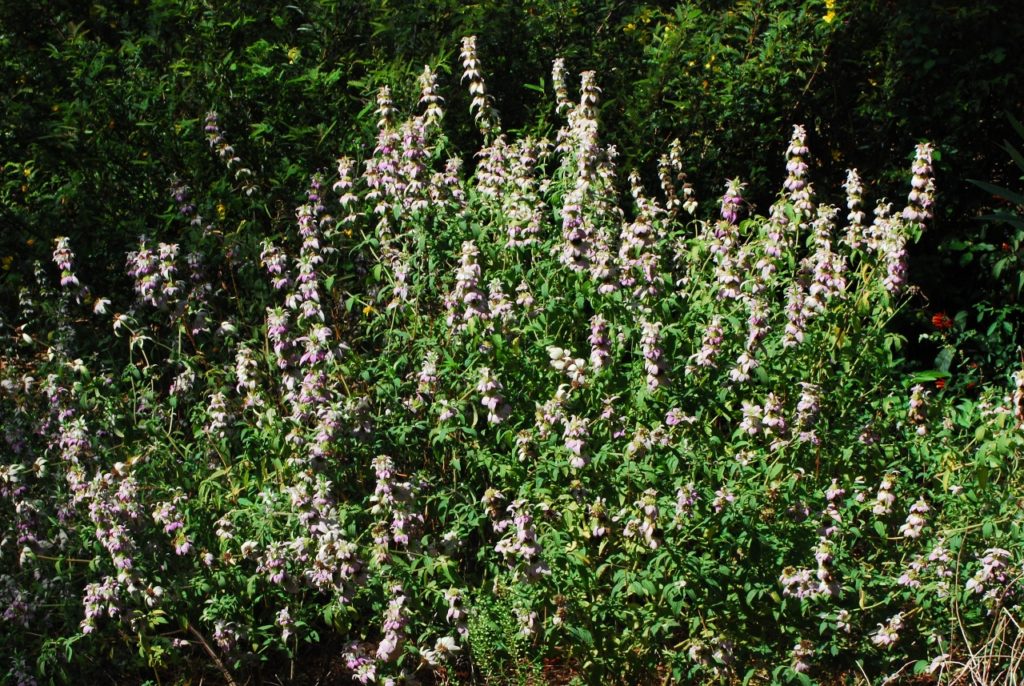
Spotted Beebalm
Monarda punctata
Spotted Beebalm or Horsemint is found throughout most of Florida, especially along the coast, and the eastern half of the U.S. and Canada. Salt air, but not much salt water, is tolerated behind the coastal dunes.
Some butterflies will visit the flowers, yet this is a great plant for bees and other pollinators. The purple to pink bracts have white with purple spotted flowers above them. Flowering is from June thru early fall.
Spotted Beebalm needs full sun to partial shade and dry soil. Other subspecies and varieties occur throughout the U.S. in prairies and other open dry ground. The height is usually below two feet with a similar spread. In very favorable conditions it may reach three feet in height.
Chew a leaf for a natural burst of spear minty flavor. It reminds me of Altoid mints without any sugar. Dried or fresh leaves make a great tea for colds or refreshment. Sometimes I use them in cooking.
You will definitely start seeing this plant growing along A1A near Sebastian Inlet State Park and north, yet start looking along the coast in Martin County.
Definitely include this plant when landscaping for pollinators. Seedlings will come up each year in a different location, yet they are not numerous and are easily controlled. Cutting the plant to six inches after it flowers may give you another blooming period, yet few seeds to come up later.
This plant will hold its own with other pushy wildflowers. Mix with Dune Sunflower, Gaillardia, Red Salvia, Blue Curls, Seaside Goldenrod, Beach Verbena, Coontie, Cactus, Spiderlily and other coastal plants.
For more info Click here, and here.